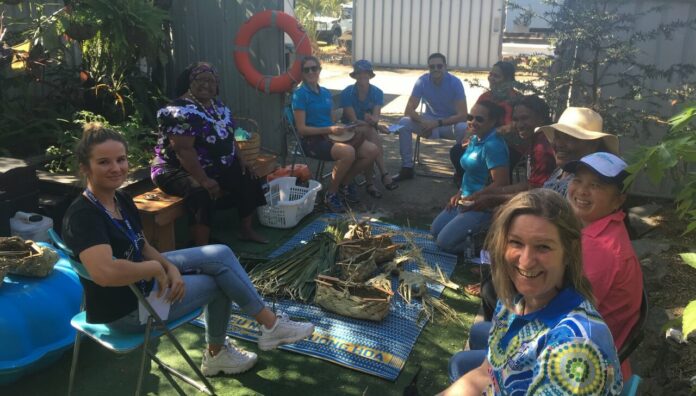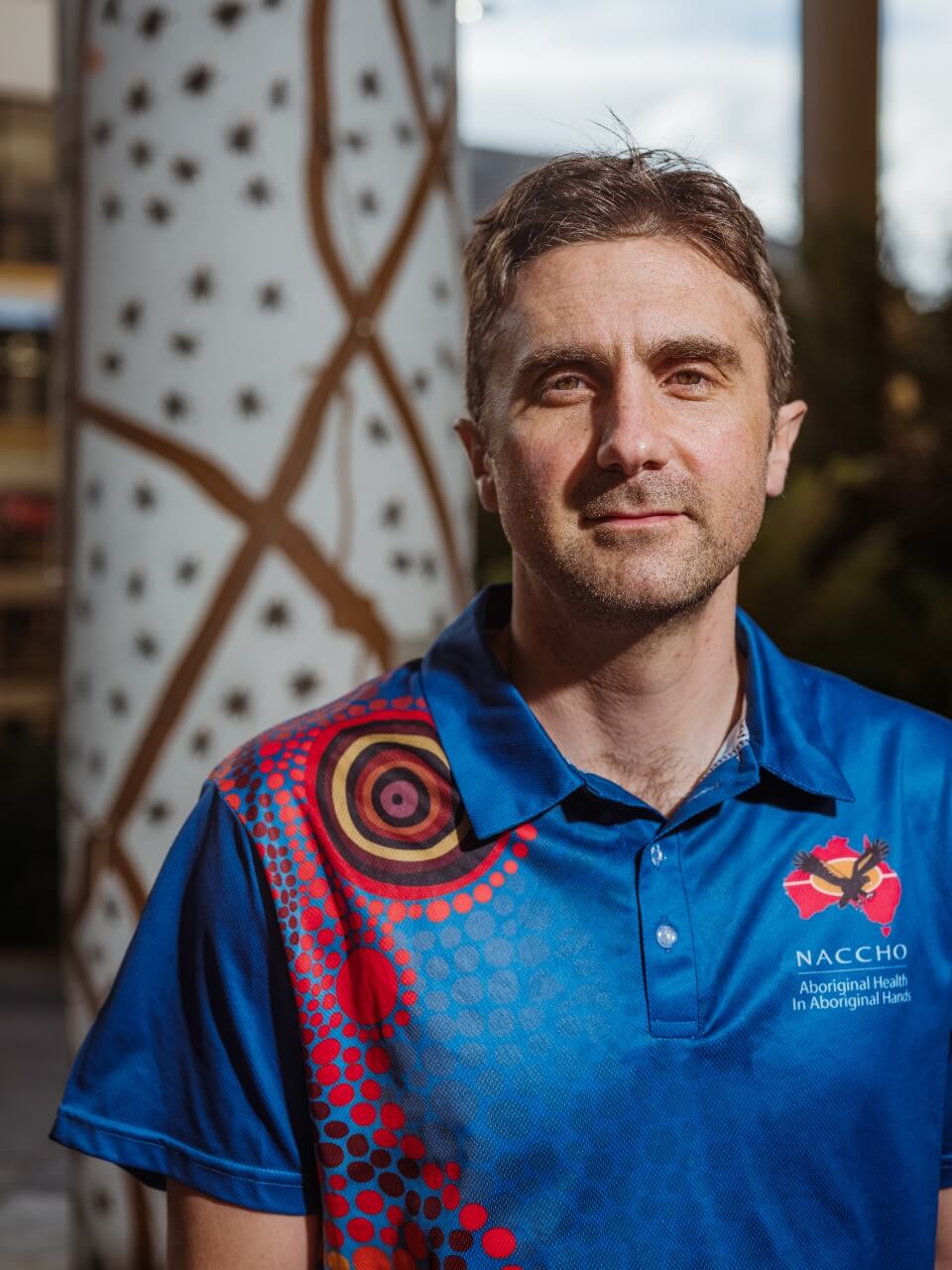
From changes to policy, service design and delivery, PSA is calling for action to improve Aboriginal and Torres Strait Islander peoples’ access to healthcare.
There is a staggering gap in life expectancy between Aboriginal and Torres Strait Islander people and other Australians.
As highlighted by the 2022 Closing the Gap Annual Report, the target to close the health and life expectancy gap between Aboriginal and Torres Strait Islander peoples and non-Indigenous Australians within a generation, while trending in a positive direction, is not on track, said PSA National President Dr Sim (she/her).
‘Equitable access to high-quality and timely healthcare throughout life is essential for improving health outcomes for Aboriginal and Torres Strait Islander peoples,’ she said.
This was the impetus behind PSA’s recently launched Aboriginal and Torres Strait Islander Peoples’ health care position statement, drafted in consultation with the National Aboriginal Community Controlled Health Organisation (NACCHO).
The statement affirms PSA’s commitment to working with Aboriginal and Torres Strait Islander people and advocates for continued collaboration.
The PSA has partnered with NACCHO to deliver several Aboriginal and Torres Strait Islander-led healthcare programs and educational initiatives over the years, including the Integrating Pharmacists within Aboriginal Community Controlled Health Services to Improve Chronic Disease Management (IPAC) Project and the Deadly pharmacists foundation training course.
While NACCHO is the national leadership body for Aboriginal and Torres Strait Islander health in Australia, PSA shapes initiatives from a pharmacist-standards, policy and educational perspective.

‘To develop pharmacy-related resources and information, we need to work with the peak bodies operating in the pharmacy world to translate and distil the messages from Aboriginal and Torres Strait Islander people into practice,’ said Mike Stephens MPS, Director, Medicines Policy and Programs at NACCHO.
The impact of the IPAC trial
Part of the reason for the IPAC project’s success is that it evolved from an organic demand from the Aboriginal Community Controlled Service (ACCHS) sector, with community leaders explaining their individual priorities and needs.
‘The three project partners responded by providing subject matter expertise and governance of the research project to understand how the model can work best, with a feedback loop set up to focus on Aboriginal and Torres Strait Islander peoples’ input,’ said Mr Stephens.
What pharmacists delivered to each service depended on need, agreed PSA Senior Consultant Pharmacist Hannah Loller MPS.

‘Sometimes the pharmacists focused on staff education, or they helped support governance structures around medicines management before focusing on more patient-specific roles,’ she said.
Throughout the program, delivered across 18 ACCHS, prescribing quality improved, alongside increases in adherence to medicines. The project partners (PSA, NACCHO and James Cook University) are keenly waiting on the results of their application to the Medical Services Advisory Committee for a publicly funded program.
In the interim, a small number of ACCHSs have gathered piecemeal funding to keep or re-engage a pharmacist, including Wuchopperen Health Service.
‘The doctors, health workers and nurses could all see our value,’ said embedded pharmacist Kate Gill MPS.
Delivering culturally safe care
Improving medicine adherence is a key part of Ms Gill’s role. This involves working with patients to identify ways to improve medicine management and getting to the bottom of why they weren’t taking them in the first place.
For example, one patient with multiple chronic conditions, including diabetes and lung disease, often missed taking her medicines for weeks at a time.
During a Home Medicines Review (HMR), Ms Gill asked the patient about her family and let her know she was there to help with her medicines.
After the patient revealed she was concerned for her son, while she struggled to look after her nieces and nephews, Ms Gill supported her patient to get her health back on track.
This included counselling on inhaler use and recommending to the prescriber to titrate her dose of metformin, which had caused persistent diarrhoea.
‘Now she’s back down to the lowest dose, which is gradually increasing without the adverse effects,’ said Ms Gill.
Once the basics were addressed, strategies were implemented to help the patient stick to an ongoing medicines regime during two follow-up HMRs.
‘Little things like setting the alarm in her phone so she remembers to take her medicines and a calendar up on the wall marking every fortnight when her [DAA] is due to pick up really helped, because she’s had so much going on,’ said Ms Gill.
At the same time, a nurse navigator worked with the patient’s son, and Wuchopperen’s social and emotional wellbeing team is helping her find more suitable housing.
‘Now that she’s seeing tangible things happen, she’s starting to feel like life’s not so overwhelming,’ added Ms Gill.
A program built on co-design
The PSA’s Deadly pharmacists foundation training course, launched in October 2022, was designed to equip pharmacists with the skills needed to work in an ACCHS. In Aboriginal culture, the term ‘deadly’ means excellent, amazing or very good.
The program, co-designed with NACCHO and Aboriginal and Torres Strait Islander community members, is what other initiatives should move towards, thinks Mr Stephens.
‘Aboriginal and Torres Strait Islander peoples were involved in every stage of the program – from leading the development of the modules, participating in the advisory group and presenting the modules,’ he said.
Since the launch, pharmacists from various practice settings have shown ‘great interest’ in completing the program, said Ms Loller.
‘It’s generating a pool of pharmacists with a willingness and a readiness to find a role in the sector.’
Across the profession, Ms Loller has also witnessed pharmacists reflect on their practice and consider how to best engage their Aboriginal and Torres Strait Islander patients.
One community pharmacist, who was among the first to undertake the course, said wearing the PSA Deadly Pharmacist shirt generated an instant connection.
‘In yarning with the patient, the pharmacist said “we can support you, when you are ready” instead of saying “you need to do this for your health”,’ said Ms Loller.
‘While the patient wasn’t ready at that point, they came back and told the pharmacist “you’re deadly”.’
Driving Aboriginal and Torres Strait Islander workforce representation
To ensure an ongoing understanding of environmental trends and medicine-related issues impacting Aboriginal and Torres Strait Islander patients, PSA and NACCHO developed the Aboriginal and Torres Strait Islander Pharmacy Practice (ATSIPP) community of specialty interest (CSI).
Chaired by Nywaigi Mamu woman Chastina Heck, one of the ATSIPP CSI’s goals is to support the development of the Aboriginal and Torres Strait Islander pharmacy workforce, with representation currently low at 0.3%.
One new initiative includes the PSA Faye McMillan Conference Grant that covers registration, travel and accommodation costs for a registered pharmacist who identifies as Aboriginal or Torres Strait Islander to attend PSA’s National Conference (PSA23).
While PSA acknowledges the ongoing need to increase participation of Aboriginal and Torres Strait Islander people in pharmacy, this grant opportunity represents a genuine commitment by PSA to support the existing pharmacist workforce who identify as Aboriginal and Torres Strait Islander people.
‘Professor Faye McMillan AM herself started in a pharmacy assistant role before going on to study pharmacy,’ said Ms Loller.
‘If pharmacists have staff they think may be interested in studying to become a pharmacist, showcasing the stories of those who have gone through an alternate pathway might be one way to encourage workforce [participation].’



 John Jones MPS, pharmacist immuniser and owner of My Community Pharmacy Shortland in Newcastle, NSW[/caption]
John Jones MPS, pharmacist immuniser and owner of My Community Pharmacy Shortland in Newcastle, NSW[/caption]


 Debbie Rigby FPS explaining how to correctly use different inhaler devices[/caption]
Debbie Rigby FPS explaining how to correctly use different inhaler devices[/caption]




 Professor Sepehr Shakib[/caption]
Professor Sepehr Shakib[/caption]

 Lee McLennan MPS[/caption]
Lee McLennan MPS[/caption]
 Dr Natalie Soulsby FPS, Adv Prac Pharm[/caption]
Dr Natalie Soulsby FPS, Adv Prac Pharm[/caption]
 Joanne Gross MPS[/caption]
Joanne Gross MPS[/caption]




